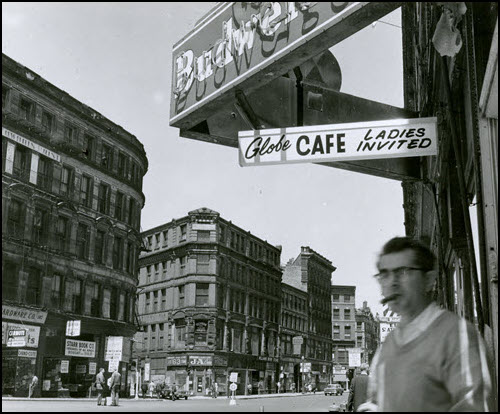
This year marks the 100th anniversary (July 5, 1923) of 16mm movies. The most significant features of the CineKodak 16mm system were safety film and B&W reversal film. Most of the early 1900s history presented below is from PHSNE charter member & past president Alan Kattelle’s book HOME MOVIES: A History of the American Industry, 1897-1979. Check it out for much more information, and also see Kodak’s Chronology of Film.
Kodak’s was not the first motion picture system smaller than 35mm for the home market. Earlier developments include Edison’s Home Kinetoscope of 1912, 9.5mm (Pathé), 17.5mm (Bell & Howell), and 28mm (Victor Animatograph).

The 16mm format slowly replaced other small formats in the market starting with its adoption for home movie making. Progress was slow in replacing 35mm film in the industrial, educational and military markets until WW II when the military adopted 16mm for instructional films.
Kodak’s system had significant advantages in the marketplace. First, Cine-Kodak 16mm film was safety film – cellulose acetate rather than highly flammable cellulose nitrate. Kodak rejected 17.5mm since split 35mm nitrate film, which was produced by Kodak until 1952, might easily enter the home market.

Second, they developed a reversal film which eliminated the need to use a second strip of film to make a positive print, reducing film use by a factor of two. An unexpected benefit of the new reversal film was that it reduced the grain size which allowed 16mm film to produce satisfactory results on a 6 x 9-foot screen.
Third, Kodak adopted an image ratio that was the then “Academy Standard” of the commercial motion picture industry. This meant that commercial pictures could easily be optically printed onto 16mm film for home rental or sale.
Color came to home movies in 1928 with the introduction of Kodacolor, a lenticular additive color film, requiring special filters and film projectors. Iconic Kodachrome replaced it in 1935 for 16mm. In 1936 the 16mm Magazine Cine-Kodak camera came out further simplifying film making for the amateur.
More about 16mm film and the Cine-Kodak:
Cine-Kodak Model A 16mm Cine Camera (Kino Camera)
The History of 16mm Film (Just8mm)
All About… 16mm (British Film Institute-BFI)
What the heck…

Are Those Even Cameras?!
Join the PHSNE Newsletter and learn more about photographic history and preservation. Already an expert? Come and share your collections and knowledge as we celebrate the history and advancement of photography.






